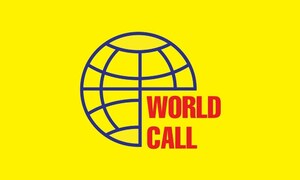Is there a method to the madness of sugarcane landscape in Sindh? Despite its disproportionate share in newspaper headlines, area under cane is a far cry from acreage under two larger (kharif) crops of province – rice and cotton. The latter two have neatly divided the farming landscape amongst themselves on the two sides of Indus. While cotton dominates in regions east of Indus, rice rules the day in the west.

Although it may appear that sugarcane has made most headway in traditionally cotton districts (coded in orange), percentages can be misleading. In fact, it is the southern rice-districts of Badin, Thatta, Sujawal, where majority sugarcane acres are concentrated. While proximity to river helps, these have also been the area where most milling units of the province had been installed historically.
The relationship between milling capacity and sugarcane cultivation in the region is a representation of classic chicken and egg problem, but one that also often features in the public policy conversation about cane’s lack of suitability for a water-starved region.

Does milling capacity lead to cultivation of cane, or vice versa? More importantly, does the intersection of politics and agro-economy influence decisions for licensing and installation of milling units, even in regions ill-suited to sugarcane plantation? Although the water challenge from sugarcane is most felt in the southern region, the answer to the chicken-and-egg problem lies farther up north.
The largest capacity in the province, within one district, is installed on the northern-border district of Ghotki. At 55,000 tons crushing per day, the capacity is unparalleled in the region: it is higher than cumulative capacity of bottom seven districts combined*.

Unlike districts in Hyderabad region, mills in these regions also do not boast very high sucrose recovery levels: compared to Tando Allah Yar (in south)’s sucrose recovery of 11.33 percent, Ghotki stands at a modest 10.3 percent.
Yet, the district managed to attract highest installed capacity circa 2008-2014, when sugar milling families from across the Sindh-Punjab border set up units in the area, to make use of the excess sugarcane cultivated in their home region of Rahim Yar Khan.
Recall that in 2006, Punjab government set up a ban on installation or enhancement of sugar milling capacity in that province to discourage cane cultivation in traditional cotton belt of Bahawalpur/southern Punjab. Yet, distorted indicative pricing mechanism meant that growers continued to prefer cane to cotton, except mills did not have the capacity to process it – considering that milling is only allowed in months specified by the government.
Since Sindh had no such ban on enhancement of sugar milling capacity, these groups set up additional units right across the Sindh-Punjab border, often within 50-km radius of their Punjab-based units. As incremental capacity came online, growers this side of the border in Ghotki also caught on to the support price addiction, ditching cotton for the better paying sugarcane crop.
Thus, while Ghotki may be way outside the traditional sugarcane belt of Sindh, distorted support price more than offsets any incremental cost growers may have to bear to secure higher application of irrigation water for cane cultivation, considering that sugarcane is an annual (12-month crop), compared to the cotton-wheat substitution (planted at regular intervals of six months).
More importantly, since most mills in the south are mid- to small-sized units, they lack economies of scale that allowed northern mills to set up bagasse-based power generation units to sell electricity to the grid.
Yet, the only thing that has kept sugarcane cultivation going in south is probably the market fragmentation. The 24 odd units within 100km radius of Hyderabad wrangle with each other to procure crop, forced to outbid each other to secure sugarcane in seasons of shortage such as seen in 2019, driving the crop price beyond indicative rate and scoring losses in return.
Source: based on 2018 sucrose recovery levels. Capacity installed based on annual reports, NEPRA capacity declaration; secondary research. Acreage: as per Sindh Development Statistics. Mills units location/Crushing data: PSMA.
*Dadu, Matiari, Hyderabad, Larkana, Sukkur, Sanghar, Thatta together have installed capacity of 42,100TCD and 8 milling units.
























Comments
Comments are closed.